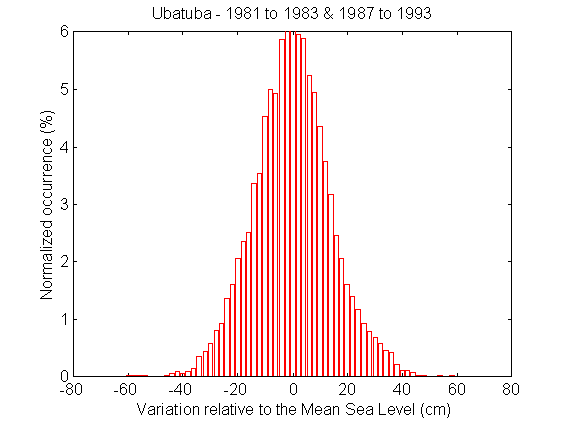
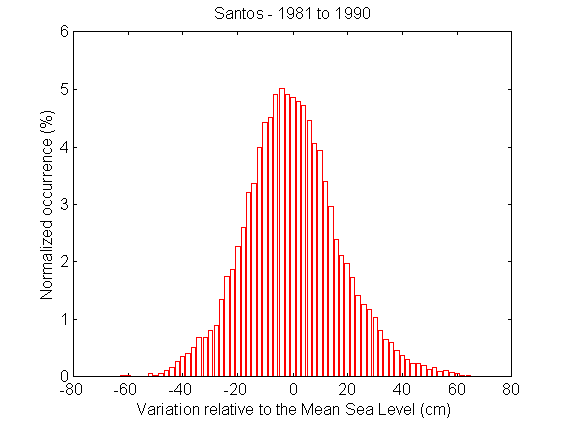
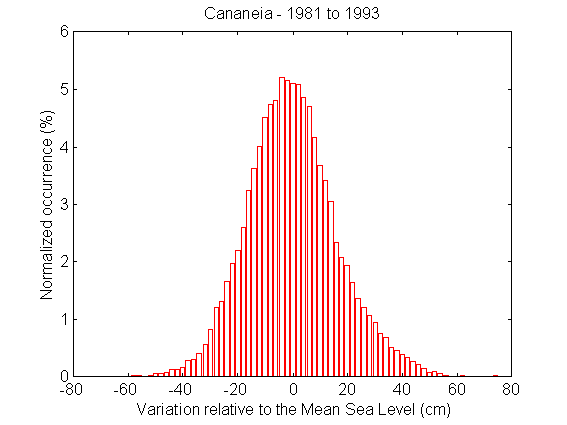
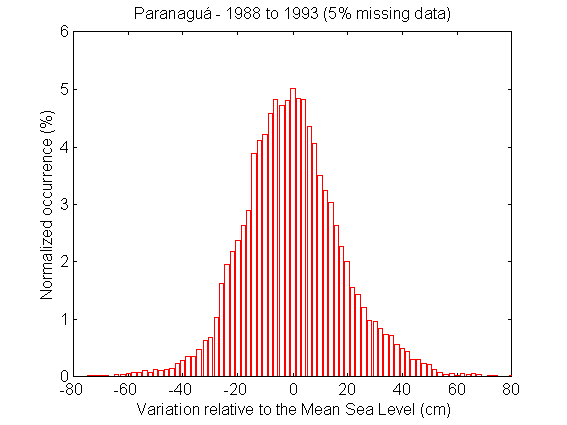
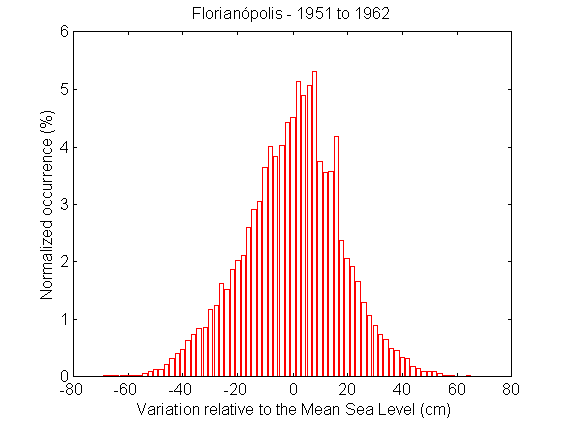
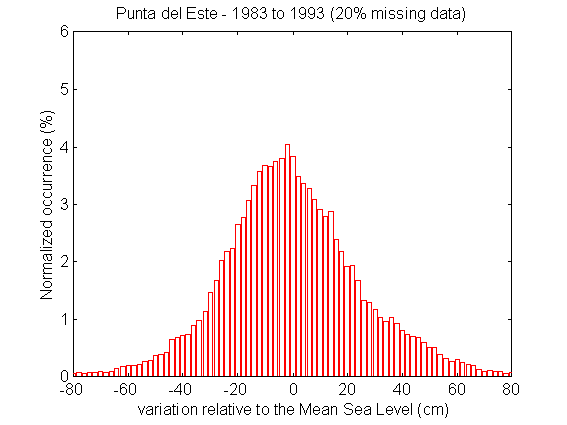
Ricardo de Camargo1, Joseph Harari 2 & Amaury Caruzzo1
1 Institute of Astronomy and Geophysics
2 Institute of Oceanography
University of São Paulo, Brazil
The Atlantic coast of the southern part of South America is characterized
by intense meteorological influence over the ocean, with frequent occurrences
of low frequency oscillations on the mean sea level (Stech & Lorenzzetti,
1992; Camargo & Harari, 1994; Castro & Lee, 1995). Tidal records
over this area were used to perform a basic statistics of the storm surge
events, considering the available processed data from coastal tidal stations.
The results here presented correspond to the initial phase of a project
which intends to develop a forecast system for storm surge events over
the study area, covering the oceanic region from the northern Argentinian
shelf until the State of Rio de Janeiro (Brazil), hereafter called South-Western
Atlantic Ocean (SWAO). The data set is composed by hourly tidal series
of:
- Ubatuba, Brazil (23°30?S 045°07?W), from 1981 to 1983 and
from 1987 to 1993;
- Santos, Brazil (23°57?S 048°19?W), from 1981 to 1990;
- Cananéia, Brazil (25°01?S 047°55?W), from 1981 to
1993;
- Paranaguá, Brazil (25°30?S 048°30?W), from 1988 to
1993 (with 5% of missing data);
- Florianópolis, Brazil (27°57?S 048°40?W), from 1951
to 1962; and
- Punta del Este, Uruguay (35°00?S 055°00?W), from 1983 to
1993 (with 20% of missing data).
- For each station, the mean sea level was defined as the mean of the
whole tidal series, while the low frequency oscillations were evaluated
through a moving average filter with a 48 hours window. Finally, the normalized
occurrence of positive and negative events was obtained, considering categories
of 2cm, from -0.8 m to 0.8 m (Fig. 1).
It is possible to note the approximately gaussian shape of each curve around the mean sea level, as expected. Besides, in spite of the heterogeneous distribution of the tidal stations and their local characteristics, one can observe that, from north to south, there is a decreasing occurrence of near-zero values as well as an increasing occurrence of far-from-zero values of the mean sea level oscillations.






Fig. 1. Histograms of normalized storm surge occurrences considering 6 coastal stations over the South-Western Atlantic Ocean (SWAO).
The main reason for this behavoir is the intensity of the meteorological
systems, which are in general stronger in the southern part of the study
area, causing most proeminent effects in the ocean.
An important feature is the existence of a leading time varying from
20 to 60 hours between the occurrences of storm surges at Punta del Este
relative to Santos, which can be used as an empiric indication for forecast
purposes (Fig. 2).
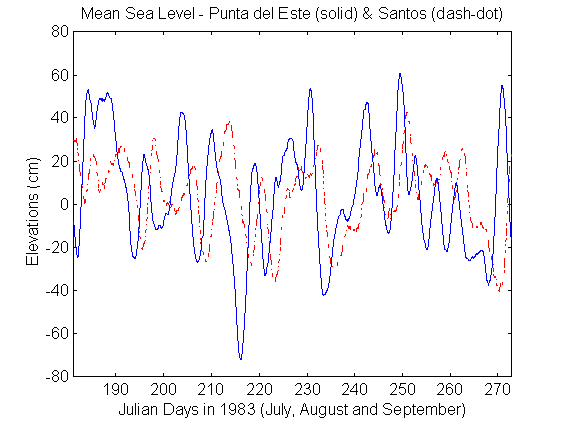
Fig. 2. Comparison between mean sea level oscillations in Punta del Este (solid line) and Santos (dash-dotted line), from July to September, 1983.
Figure 2 also shows greater amplitude of the mean sea level variability
in Punta del Este compared to Santos; this is observed, for instance, between
Julian days 180 and 190 with positive values, and between 210 and 220 with
negative values.
In any case, it is important to mention some events in which the differences
in amplitude are small, or even with higher values in Santos (for example,
between julian days 190 and 200, and between 250 and 270, in (Fig. 2).
In such cases, it is not possible to predict storm surge events at the
northernmost stations based only on the information of the southward ones.
An alternative solution is the use of a mesoscale numerical model of oceanic
circulation in the SWAO, forced by meteorological forecasts.
References
Camargo, R. & Harari, J. 1994. Modelagem Numérica de Ressacas na Plataforma Sudeste do Brasil a partir de Cartas Sinóticas de Pressão Atmosférica na Superfície. Bolm Inst. oceanogr., S Paulo, 42(1):19-34.
Castro, B. M. & Lee, T. N. 1995. Wind-forced sea level variability on the southeast Brazilian shelf. J.Geophys.Res., 100(C8):16045-16056.
Stech, J. L.. & Lorenzzetti, J. A., 1992. The response of the South Brazil Bight to the Passage of Wintertime Cold Fronts. J. Geophys. Res., 97(C6):9507-9520.